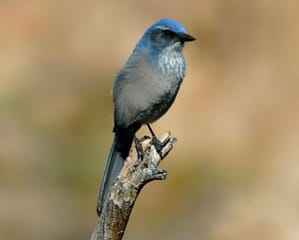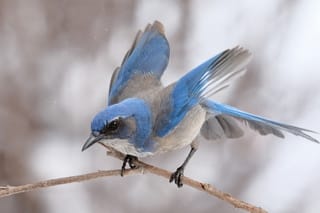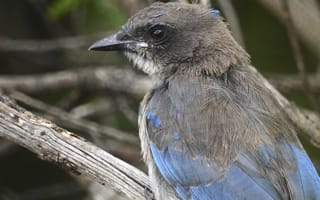Initially this guide displays common birds of all types that are flying right now in our area. Use the selectors below to view rare birds, view birds flying any time, restrict the output to a certain shape of bird, or search by name.
New Mexico is on the western edge of the Central Flyway which is one of the major migration pathways between north and south for birds traveling between breeding and wintering grounds along the Rocky Mountains. This has resulted in the state having an incredible diversity of birds with over 550 different species reported. A little more than half of this number are sighted annually on the Pajarito Plateau. Some of these birds are full-time residents, some migrate here for a few weeks or months, and other are only seen briefly as they pass through the region.
This guide features many of the birds known to frequent Los Alamos county by when they are likely to be seen in the area. You can get additional information on local birds by joining PEEC Birders or going to the eBird website. eBird also includes lists of rare bird sightings and birding hot spots.
Bird References
Birdweb
Cornell Lab of Ornithology
eBird
eNature
Institute for Bird Populations
National Audubon Society
New Mexico Ornithology Society
What Bird
xeno-canto
Subject Area Experts (all guides)
Steve Cary (butterflies)
Beth Cortright (insects)
Terry Foxx (invasive plants)
Leslie Hansen (mammals)
Richard Hansen (fish, mammals)
Dorothy Hoard (butterflies, trees)
Chick Keller (flowers, herbarium)
Shari Kelley (geology)
Kirt Kempter (geology)
Garth Tietjen (reptiles)
David Yeamans (birds)
Web Development and Content Management
Pat Bacha
Jennifer Macke
Graham Mark
Akkana Peck
Contact
Please contact us for local nature questions and sightings. We welcome comments, corrections, and additions to our guides.
For more information about local nature, please visit our Nature Blog or subscribe to PEEC This Week.
Make Selection
 Photo: adult by Hari Viswanathan  Photo: adult by Bob Walker  Photo: immature by antoniolp |  Woodhouse's Scrub-jay, Western Scrub JayWOSJ (Aphelocoma woodhouseii)Family: Corvidae (Jays, Magpies, and Crows) Size: 1 - 13 in (3 - 33 cm) Flies: Jan 01 - Dec 31 Morphology: both sexes are light blue and gray above with a a white throat, a gray breast, a partial blue band over the breast, and a long, pointed bill; chicks start out fully gray and get bluer as they get older Status: native; common Food source: diet varies with season from insects, spiders, and snails to seeds, acorns, nuts, and berries; may eat rodents, amphibians, eggs, and young birds of other species Habitat: scrub oak, woodlands, chaparral Woodhouse’s Scrub-Jays are nonmigratory birds named for Samuel W. Woodhouse who wrote about his Southwest expeditions between 1849 and 1852. They are often found in urban areas where they will come to platform and suet feeders. Typically these birds forage on the ground or in trees and will bury seeds and nuts for later retrieval. Scrub-jays are very intelligent, remembering the location and rate of decay of over 200 food caches. They will also steal food from other birds. Woodhouse’s Scrub-Jays breed as isolated pairs. Eggs are laid in a thick-walled cup-nest and hatch in a little less than 3 weeks. The young leave the nest about 3 weeks later. Info Photos Range Frequency Featured |
